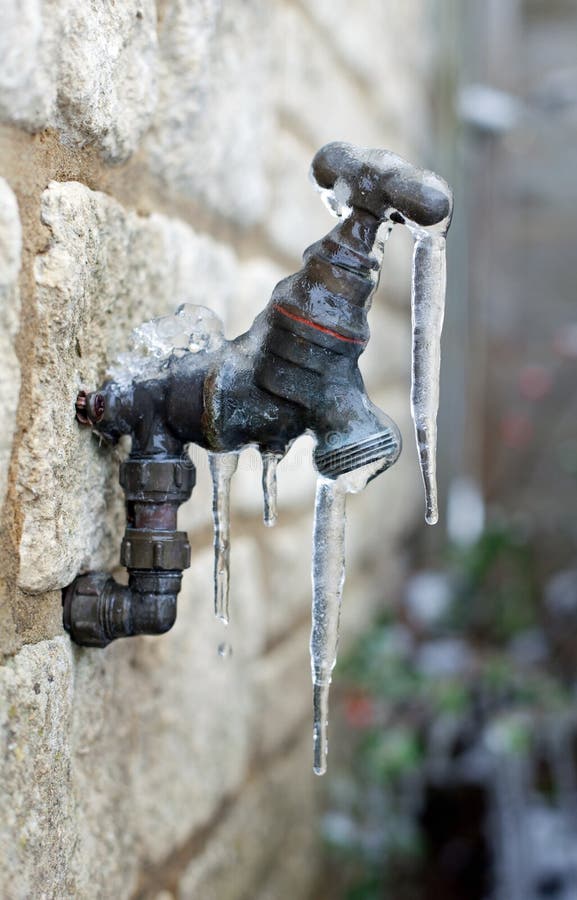Any individual has got their personal way of thinking on the subject of Preventing and dealing with frozen pipes.

Cold weather can wreak havoc on your plumbing, particularly by freezing pipelines. Below's exactly how to stop it from occurring and what to do if it does.
Intro
As temperatures drop, the risk of frozen pipes increases, possibly causing expensive fixings and water damage. Recognizing exactly how to stop frozen pipes is essential for property owners in cool climates.
Avoidance Tips
Insulating prone pipelines
Wrap pipelines in insulation sleeves or use warm tape to safeguard them from freezing temperatures. Focus on pipes in unheated or outside areas of the home.
Home heating techniques
Keep indoor spaces sufficiently heated up, specifically areas with pipes. Open cabinet doors to allow cozy air to distribute around pipelines under sinks.
Exactly how to determine icy pipes
Try to find reduced water flow from taps, uncommon odors or noises from pipes, and visible frost on revealed pipelines.
Long-Term Solutions
Architectural modifications
Think about rerouting pipes far from outside walls or unheated locations. Include additional insulation to attics, cellars, and crawl spaces.
Upgrading insulation
Purchase premium insulation for pipelines, attic rooms, and walls. Proper insulation assists preserve constant temperature levels and minimizes the danger of frozen pipelines.
Protecting Outside Plumbing
Yard hose pipes and outside faucets
Disconnect and drain garden hoses prior to winter season. Mount frost-proof faucets or cover exterior taps with shielded caps.
Recognizing Frozen Pipelines
What creates pipes to freeze?
Pipes freeze when subjected to temperature levels below 32 ° F (0 ° C) for prolonged periods. As water inside the pipes freezes, it increases, putting pressure on the pipeline walls and possibly causing them to burst.
Dangers and problems
Icy pipes can bring about water supply disturbances, building damage, and costly fixings. Ruptured pipelines can flooding homes and cause extensive structural damage.
Signs of Frozen Piping
Identifying icy pipelines early can prevent them from breaking.
What to Do If Your Pipelines Freeze
Immediate activities to take
If you believe icy pipes, keep taps available to soothe stress as the ice thaws. Make use of a hairdryer or towels taken in hot water to thaw pipelines gradually.
Final thought
Avoiding frozen pipelines calls for aggressive actions and quick responses. By understanding the reasons, indications, and preventive measures, home owners can secure their plumbing throughout cold weather.
5 Ways to Prevent Frozen Pipes
Drain Outdoor Faucets and Disconnect Hoses
First, close the shut-off valve that controls the flow of water in the pipe to your outdoor faucet. Then, head outside to disconnect and drain your hose and open the outdoor faucet to allow the water to completely drain out of the line. Turn off the faucet when done. Finally, head back to the shut-off valve and drain the remaining water inside the pipe into a bucket or container. Additionally, if you have a home irrigation system, you should consider hiring an expert to clear the system of water each year.
Insulate Pipes
One of the best and most cost-effective methods for preventing frozen water pipes is to wrap your pipes with insulation. This is especially important for areas in your home that aren’t exposed to heat, such as an attic. We suggest using foam sleeves, which can typically be found at your local hardware store.
Keep Heat Running at 65
Your pipes are located inside your walls, and the temperature there is much colder than the rest of the house. To prevent your pipes from freezing, The Insurance Information Institute suggests that you keep your home heated to at least 65 degrees, even when traveling. You may want to invest in smart devices that can keep an eye on the temperature in your home while you’re away.
Leave Water Dripping
Moving water — even a small trickle — can prevent ice from forming inside your pipes. When freezing temps are imminent, start a drip of water from all faucets that serve exposed pipes. Leaving a few faucets running will also help relieve pressure inside the pipes and help prevent a rupture if the water inside freezes.
Open Cupboard Doors
Warm your kitchen and bathroom pipes by opening cupboards and vanities. You should also leave your interior doors ajar to help warm air circulate evenly throughout your home.

I hope you enjoyed our article about 6 Ways to Prevent Frozen Pipes. Thanks a ton for taking time to read through our content. Remember to pause to share this content if you enjoyed it. We recognize the value of reading our article about 6 Ways to Prevent Frozen Pipes.
Learn More
Comments on “Safeguarding Pipes from Cold Weather Issues: Key Tips”